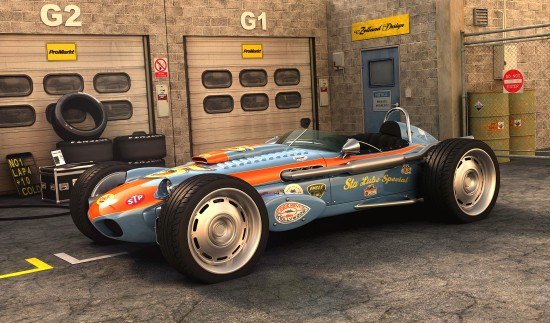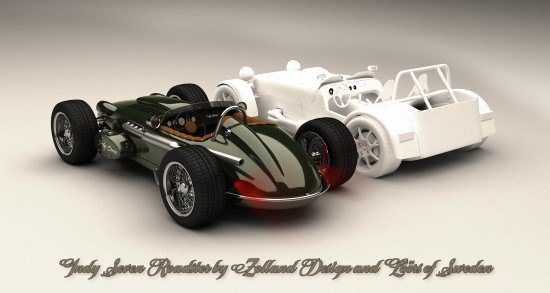What's Right With This Picture? Indy Roadster Se7en by Zolland Design

Zolland Design AB, a Swedish graphic arts and design firm that also goes by the name Vizualtech, has rendered an Indy Roadster style body they call the IndySeven with the correct dimensions to fit on a Caterham or Lotus Seven chassis. From a design standpoint it works, but then I’m fond of Frank Kurtis’ Indy Roadsters. Kurtis was one of the most prolific race car builders ever, with 120 Kurtis-Kraft cars having competed at Indy, including five race winners. From a conceptual standpoint I like it even more because it puts a clever twist on the history of the Indianapolis 500.
The renderings look great. They take one of the original wind in your hair sports cars and make it look like it would be even more fun. The original Seven has an immediately recognizable shape, but you’d never know a Seven was under these designs.
A real Indy Roadster, made by Frank Kurtis
Between the Sevens made by Lotus, those made by Caterham, and particularly the popular Locost/Se7en DIY replicas, if someone were to take Zolland Design’s rendering and start selling those bodies, they just might have a ready market.
Ronnie Schreiber edits Cars In Depth, a realistic perspective on cars & car culture and the original 3D car site. If you found this post worthwhile, you can dig deeper at Cars In Depth. If the 3D thing freaks you out, don’t worry, all the photo and video players in use at the site have mono options. Thanks for reading – RJS
A real Indy Roadster, made by Frank Kurtis

Ronnie Schreiber edits Cars In Depth, the original 3D car site.
More by Ronnie Schreiber
Latest Car Reviews
Read moreLatest Product Reviews
Read moreRecent Comments
- MaintenanceCosts "And with ANY car, always budget for maintenance."The question is whether you have to budget a thousand bucks (or euro) a year, or a quarter of your income.
- FreedMike The NASCAR race was a dandy. That finish…
- EBFlex It’s ironic that the typical low IQ big government simps are all over this yet we’re completely silent when oil companies took massive losses during Covid. Funny how that’s fine but profits aren’t. These people have no idea how business works.
- Ajla Goldman Sachs 🥂
- Rna65689660 DVR and watch all that are aired. Has been this way for 40 years.
















































Comments
Join the conversation
I'd rock it! Well with a Hartley V8
This is pretty slick. For a while, I've been thinking about designing my own "Locost" vehicle--as these Lotus 7 clones are apparently called.